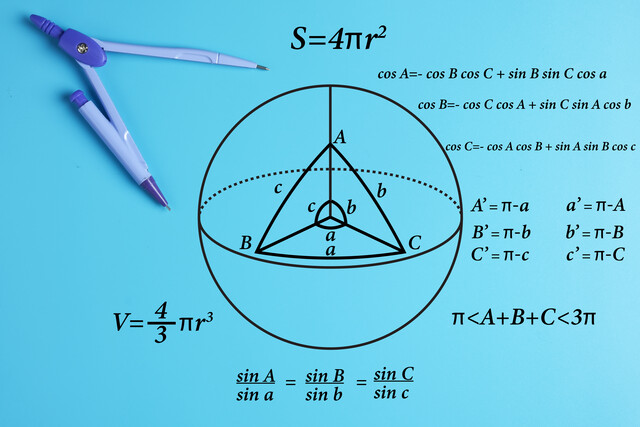Lesson 1. Real and Complex Numbers: A Pre-Calculus Introduction
Complex numbers extend the real number system by incorporating imaginary numbers, represented by the symbol i, where i squared equals -1. The lesson explores their representation in the form a + bi and describes basic arithmetic rules and properties like the complex conjugate.
Lesson 2. Exploring the Foundations of Functions: A Pre-Calculus Journey
The lesson highlights the critical role of functions in mathematics by distinguishing unique output-producing relations and illustrates the plotting of these functions on coordinate axes to track continuity and changes. A practical exercise on graph plotting solidifies these theoretical underpinnings with hands-on problem-solving.
Lesson 3. Understanding Domain and Range in Functions: Key Insights and Applications
The lesson delves into domain and range, illustrating limitations within real-valued functions and utilizing different tests to identify one-to-one functions. Students learn to construct composite functions and compute inverses, fundamental for understanding function interactions.
Lesson 4. Understanding Mathematical Relationships: Equations and Inequalities
This lesson explores how equations and inequalities relate algebraic expressions, with solutions verified either as distinct points or continuous intervals. Mastery involves both algebraic manipulation and the graphical portrayal of solution sets.
Lesson 5. The Intricacies of Polynomials and Rational Functions
Polynomials are fundamental in calculus, representing expressions with constant coefficients and variable powers, whereas rational functions focus on polynomial-based fractions acknowledging domain limitations. The domain, roots, and intercepts of these functions help in graphing and solving them, with tools like the quadratic formula applied for quadratic functions.
Lesson 6. Roots and Asymptotes: Uncovering Mathematical Patterns
Synthetic division offers a streamlined method to determine the roots of higher-degree polynomials, shedding light on their underlying structure and factors. Rational functions' asymptotic behavior, whether approaching infinity or shifting diagonally, is critical to understanding their limits and domain.
Lesson 7. Understanding Logarithmic Functions
Exponential and logarithmic functions are the lesson's protagonists, with their rules showcased through applications in continuous compounding and decay modeling. The session underscores the functionality of the constant e and natural logarithms as tools for solving complex equations in these contexts.
Lesson 8. Sine, Cosine, and Tangent: A Pre-Calculus Journey
Trigonometric functions stem from right triangle geometry, assisting in determining unknown measurements in triangles via sine, cosine, and tangent. Calculators serve as valuable tools for generating function values required in both theoretical and practical problem-solving.
Lesson 9. Angles in Radians: A New Perspective
By examining the unit circle, this lesson interrelates trigonometry with circular motion, transitioning from traditional angle measurements in degrees to radians. Students are equipped to tackle complex problems involving trigonometric functions and circular geometry.
Lesson 10. Mastering Trig Identities and Inverse Functions
A focus on graphical analysis and the properties of trigonometric functions emphasizes their symmetries and inverse relationships, illustrating the impact on their algebraic and geometric applications. Key exercises provided train students in identifying the correct function manipulations and solutions specific to the characteristics of triangles.
Lesson 11. Mastering Vectors in Pre-Calculus
While scalars embody pure magnitude, vectors integrate direction, offering a richer toolkit for problem-solving. This lesson guides through representing vectors in a coordinate system, adding, and subtracting them, with practical exercises to reinforce learning.
Lesson 12. Vectors Unleashed: Exploring Unit Vectors and Scalar Products
Lesson Summary 4: This lesson extends basic vector theory by introducing unit vectors in algebraic form and discusses the influence of scalar multiplication on vectors. Learners also explore the scalar product computation as a means to determine vector magnitude, enhancing their mathematical toolkit.
Lesson 13. Understanding Polar Coordinates through Trigonometry
Polar coordinates offer an alternative to the traditional Euclidean system, simplifying various mathematical problems by expressing a point's location as a distance and an angle from the origin. This lesson covers the relationship between polar and rectangular coordinates, conversion techniques, and the benefits of using polar coordinates in certain algebraic expressions.
Lesson 14. Circles and Parabolas: A First Look
Conic sections are derived from slicing a cone at various angles, resulting in shapes like circles and parabolas, which are explored in this lesson. The algebraic and graphical properties of these shapes demonstrate their underlying mathematical principles while highlighting their unique characteristics.
Lesson 15. Exploring the Intricacies of Ellipses and Hyperbolas
Ellipses, described as flattened circles, accommodate the Sun in their focus, portraying celestial orbits, while hyperbolas, akin to parabolas, demonstrate more open loops. Conic sections dictate planetary paths, emphasizing varying speeds and distances that result in hyperbolic or elliptical motions.
Lesson 16. Limits: The Gateway to Calculus
Limits enable us to predict how functions behave near specific points, playing a critical role in calculus concepts like differentiation and integration. By examining both one-sided and two-sided limits, we delve into the nuances of function behavior and their continuity.
Lesson 17. Diving into Sequences and Series
Exploring sequences and series, the lesson offers a holistic overview of these comprehensive topics, detailing how sequences are ordered number sets, while series unite sequence terms into sums. Essential concepts like convergence and divergence provide a sneak peek into the world of limits, paving the way for calculus applications.
Lesson 18. Derivatives Simplified
Lesson Summary 1: This pre-calculus lesson introduces the concept of derivatives, connecting it to algebra and limits by exploring how they quantify the rate of change in a function. Through examining the slope of both linear and nonlinear functions, the lesson demonstrates how differentiation offers insights into varying rates of change.
Lesson 19. Integrals and Antiderivatives: A Prelude
This lesson delves into integrals, complementing derivatives, and uses rectangles through Riemann sums to approximate curve-under areas. The resultant calculated areas reflect a fundamental calculus concept foundational for physics and advanced math studies.

35 Hours average completion time
3.5 CEUs
19 Lessons
20 Exams & Assignments
55 Discussions
20 Videos
40 Reference Files
200 Articles
Mobile Friendly
Last Updated October 2025





















